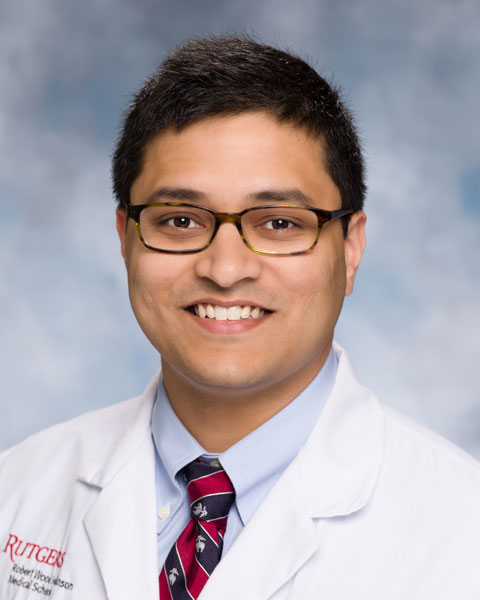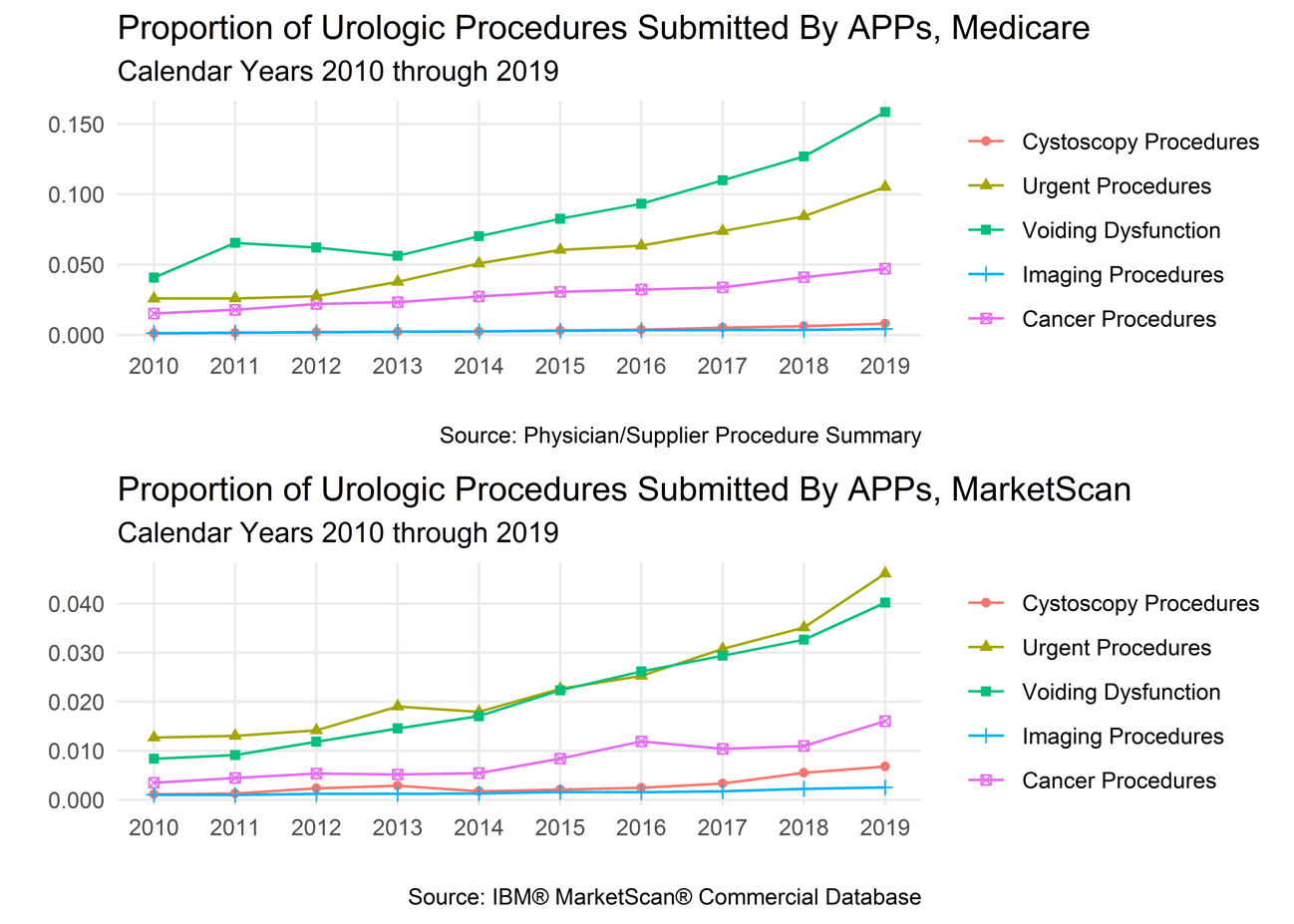Back
Poster, Podium & Video Sessions
Podium
PD25: Health Services Research: Practice Patterns, Quality of Life and Shared Decision Making II
PD25-08: Advanced Practice Providers and Urologic Procedures: an Analysis of Medicare and Commercial Claims
Saturday, May 14, 2022
10:40 AM – 10:50 AM
Location: Room 244
Max Hyman, Parth Modi*, CHICAGO, IL

Parth K. Modi, Dr.
Rutgers Robert Wood Johnson Medical School
Podium Presenter(s)
Introduction: As the population ages and the demand for urologic care increases, urology practices are hiring nurse practitioners and physician assistants (advanced practice providers [APPs]) to address the shortage of urologists. While the expanding role of APPs in urology is well-established, the types and extent of urologic procedures that these APPs perform are not.
Methods: For calendar years 2010 through 2019, we used Medicare and commercial insurance claims from the Physician/Supplier Procedure Summary and IBM® MarketScan® Commercial Database, respectively. We identified common urologic procedures using Current Procedural Terminology codes and grouped them into five categories: cystoscopy procedures, urgent procedures, voiding dysfunction, imaging procedures, and cancer procedures. For each year and category, we calculated the number and proportion of urologic procedures submitted by APPs.
Results: From 2010 to 2019, the number of urologic procedures submitted by APPs increased from 35,358 (0.8%) to 185,099 (3.2%) in the Medicare data and 2,855 (0.2%) to 8,147 (0.9%) in the MarketScan data. For both data sets, cystoscopy procedures and voiding dysfunction (cystometrogram, posterior tibial nerve stimulation, sacral neuromodulation programming, and pelvic biofeedback) revealed the largest absolute increases; however, the growth in the proportion of urologic procedures submitted by APPs was largest for voiding dysfunction and urgent procedures (abscess drainage, complicated urethral catheter placement, and intracavernosal injection/irrigation).
Conclusions: Among publicly and privately insured patients, APPs are submitting an increasing number and proportion of common urologic procedures. This growth is driven primarily by cystoscopy procedures, voiding dysfunction, and urgent procedures.
Source of Funding: none

Methods: For calendar years 2010 through 2019, we used Medicare and commercial insurance claims from the Physician/Supplier Procedure Summary and IBM® MarketScan® Commercial Database, respectively. We identified common urologic procedures using Current Procedural Terminology codes and grouped them into five categories: cystoscopy procedures, urgent procedures, voiding dysfunction, imaging procedures, and cancer procedures. For each year and category, we calculated the number and proportion of urologic procedures submitted by APPs.
Results: From 2010 to 2019, the number of urologic procedures submitted by APPs increased from 35,358 (0.8%) to 185,099 (3.2%) in the Medicare data and 2,855 (0.2%) to 8,147 (0.9%) in the MarketScan data. For both data sets, cystoscopy procedures and voiding dysfunction (cystometrogram, posterior tibial nerve stimulation, sacral neuromodulation programming, and pelvic biofeedback) revealed the largest absolute increases; however, the growth in the proportion of urologic procedures submitted by APPs was largest for voiding dysfunction and urgent procedures (abscess drainage, complicated urethral catheter placement, and intracavernosal injection/irrigation).
Conclusions: Among publicly and privately insured patients, APPs are submitting an increasing number and proportion of common urologic procedures. This growth is driven primarily by cystoscopy procedures, voiding dysfunction, and urgent procedures.
Source of Funding: none


.jpg)
.jpg)